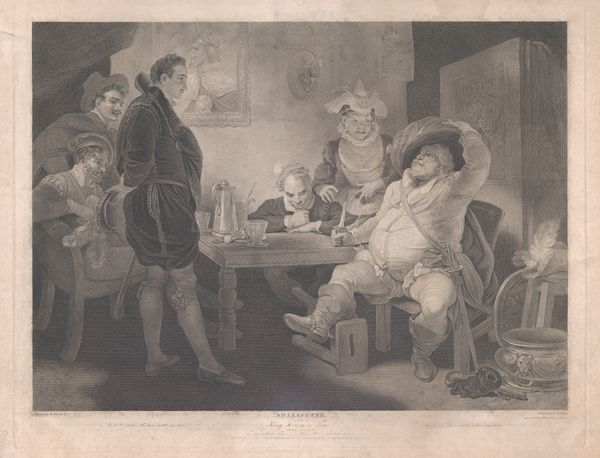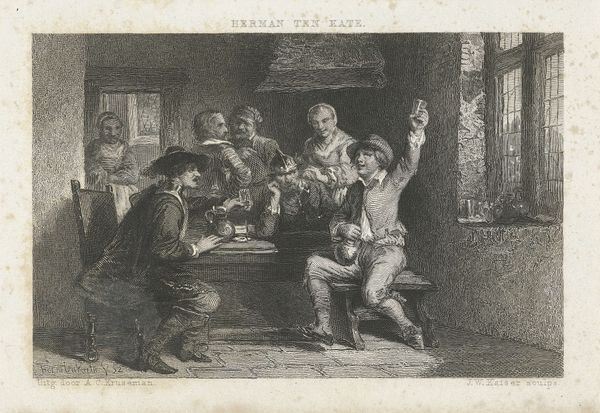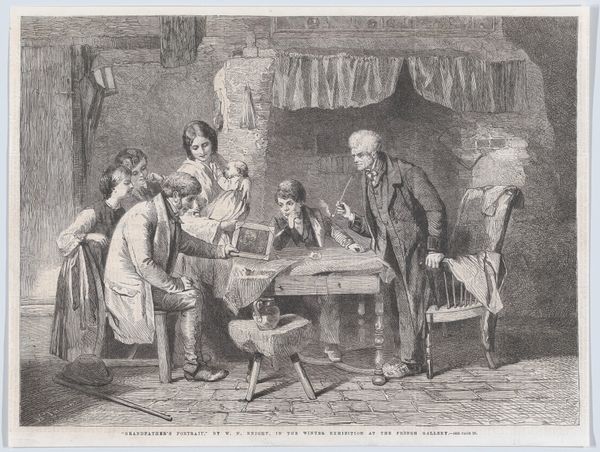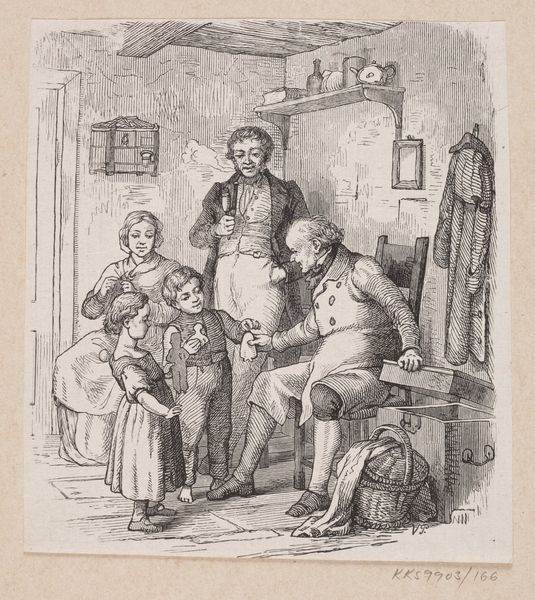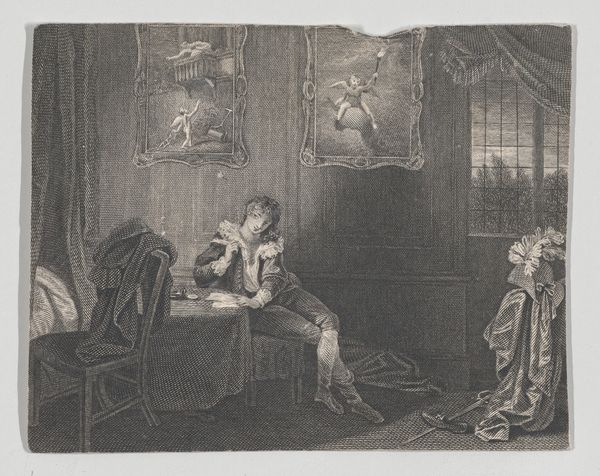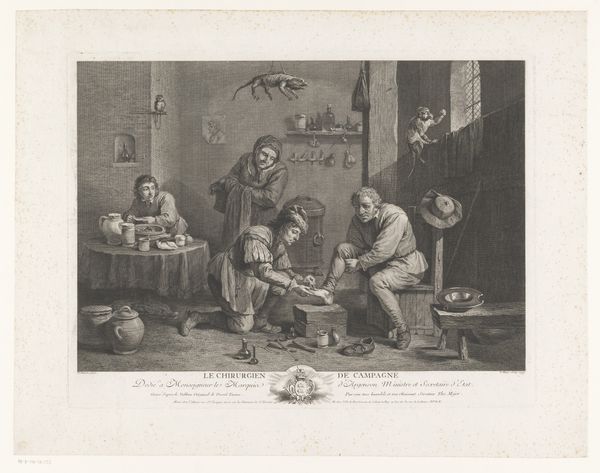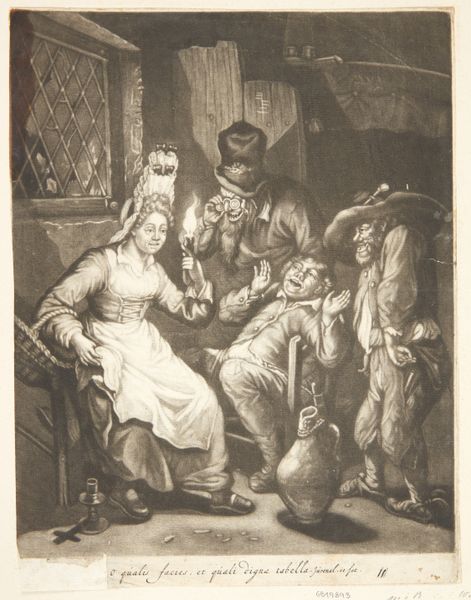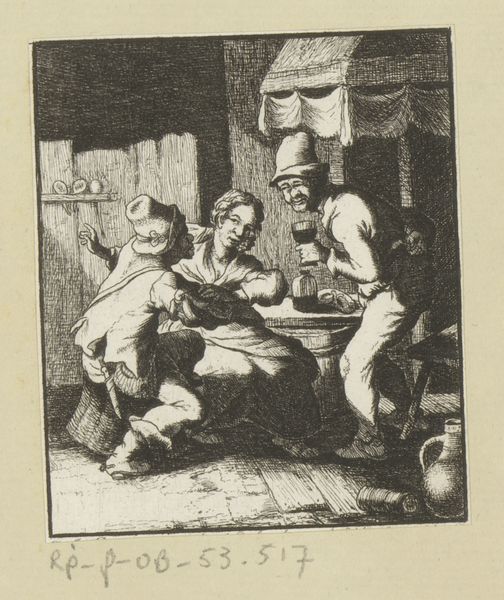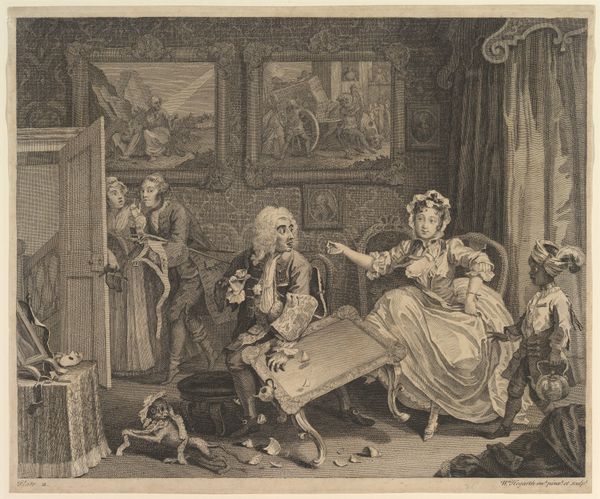
Boar's Head Tavern: Prince Hal, Falstaff and Poins (Shakespeare, First Part of Henry IV, Act 2, Scene 4) 1825 - 1840
0:00
0:00
drawing, print
#
portrait
#
drawing
#
narrative-art
# print
#
19th century
#
men
#
genre-painting
#
history-painting
Dimensions: Sheet: 3 7/16 × 2 9/16 in. (8.8 × 6.5 cm)
Copyright: Public Domain
This engraving by Charles Heath the elder captures a scene from Shakespeare’s Henry IV, set within the Boar's Head Tavern. Notice the figure of Falstaff, his corpulence and disheveled appearance acting as potent symbols of excess and misrule. The tavern itself, dimly lit and bustling, represents a space of revelry, a carnivalesque world turned upside down. Consider the motif of the boar's head itself. In medieval iconography, the boar symbolized bravery and ferocity, yet here, in the context of the tavern, it is ironically subverted. It connects to pagan traditions, where animal sacrifice and feasting held symbolic importance. Yet, within the play, it is charged with an unsettling irony, reflecting the inversion of values and societal norms. The image carries a powerful psychological weight, engaging our subconscious fascination with transgression, the release of inhibitions, and the temporary escape from societal constraints. The symbolic language employed here, echoing throughout art history, reveals a cyclical progression. It resurfaces, evolves, and acquires new meanings in each retelling, attesting to the enduring power of images to evoke a sense of cultural memory and shared human experience.
Comments
No comments
Be the first to comment and join the conversation on the ultimate creative platform.
